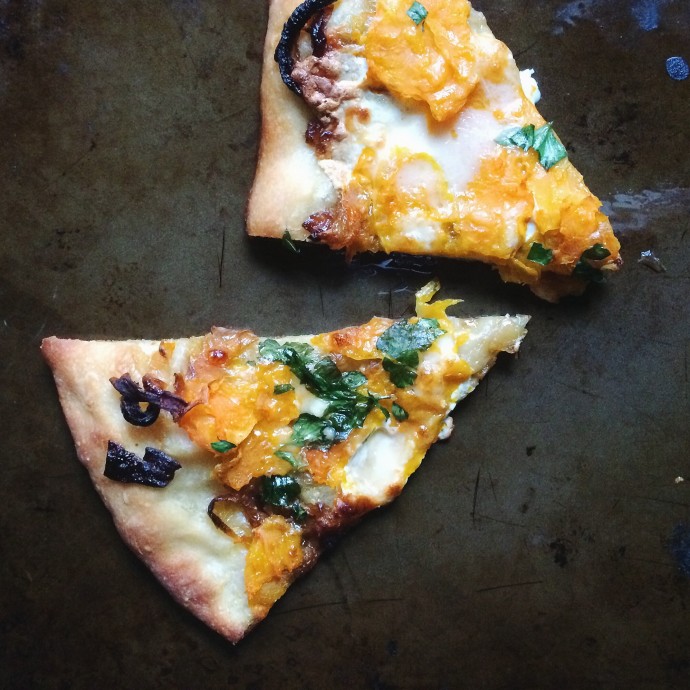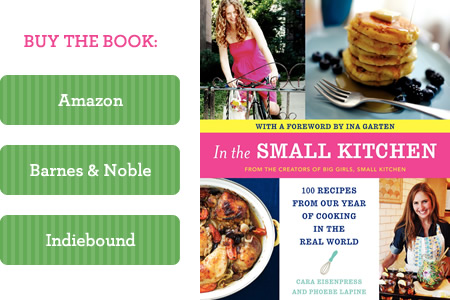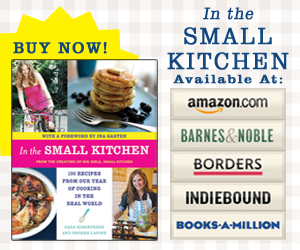Six months ago, we moved (two blocks) to a new apartment. Between the beautiful afternoon light and the roof deck where I’m about to plant radishes(!), we marvel each day at our NYC real estate luck-no matter that we hike up five flights to reach our nest and now cook on an electric stove.
The kitchen, though, didn’t have a microwave when we got here, nor an obvious place to install one, so we decided to try nuke-free living for a while before we committed any counter space to the gadget. Six months in, we barely miss the ability to melt cheese in a heartbeat. That’s not fully true. But still, though there’s more patience needed to reheat leftovers or make oatmeal, and more dishes dirtied in the process, I’ve loved the exercise in not depriving foods of texture and never sticking my spoon into steaming soup to find that the center is cold.
Here are my notes and tips from a half year of microwave-free cooking and eating.

Reheating Leftovers
Stovetop heat is bottom up, so the key to getting your leftovers good and hot throughout is to capture some steam, creating an oven-like situation in your pan. Note, by the way, that we don’t have a toaster oven either. This is all about stovetop and oven.
For pasta (sauced or plan), I like to add some olive oil to the pan. If I’m looking for crispy edges, I cook over medium heat, turning every so often. If I want sauced pasta to get a little soft, I cover the pan. See also: Fried Noodles, Spaghetti with Red Sauce & a Fried Egg.
Extra rice dries out in the fridge, making it the perfect candidate for use in fried rice or rice pudding cereal. I used to love being able to make rice in advance for dinner parties, then heating it up til it was fluffy and hot in the microwave. I’m still working on an exact replacement for that situation, but it definitely involves some extra water. I have been experimenting with a bastardized Persian rice, where you melt butter in the bottom of a pot, then add the leftover rice and some splashes of water, reheating the whole thing very slowly til the rice is moist again and the bottom has a crust. Also, if you know you’re going to eat your rice with curry, for example, store them in the fridge together-the sauce will prevent the rice from drying out, and then you can reheat in a covered pan over low heat all together.
I always skipped the microwave for pizza anyway. I’d rather eat it cold than soggy! You can reheat pizza in the oven (at a high temp, for a very short time), but if you don’t want to preheat for just a slice or two, grab a big enough pan and set it over medium heat. When it’s hot, add your slices and then cover the pan with any lid that even remotely fits. This will create steaminess inside. When the bottom crust is crispy and the cheese is melted, you’re ready. This is also how I make open-faced grilled cheese toasts.
Soup is another dish that I hated using the microwave for. It gets hotter quicker on the stove.
Meat can get dry and flavorless in the fridge. Rather than try to revive steak, pork or chicken to its previous state, I look to the methodology of twice-cooked pork, a Chinese dish that embraces the way that previously cooked meat can pick up a sear in the pan that’s different and delicious.
Cooking Other Things I Used To Make in the Microwave
It’s when I breakfast on oatmeal and hot cereal that not having a microwave sometimes feels like a sacrifice, besides the whole cheese melting thing. I soak my grains overnight, and then I used to just nuke for a couple minutes before dousing in cream and eating. Now, I have to pour the soaked grains into a pot, bring it to a boil, and simmer for 5 or 10 minutes if I don’t forget. Then I scrub the pot. What I should probably do is embrace the chance to start making butter-toasted steel-cut oatmeal. Maybe next winter.
For chocolate, especially chocolate bark, I improvise a double boiler using any thin heat-proof bowl set on top of a pot. Chocolate melts really quickly this way, quicker than I remember from the last time I didn’t have a microwave. Here’s a video comparing the two methods.
Melting butter is kind of a “duh” one, barely worth mentioning except for the fact that I like having a very small (5-inch diameter) saucepan around for the purpose. If you melt the butter on a broader surface, it’ll brown more quickly.
Nachos and melted cheese-topped crackers were once a go-to snack. The microwave’s rays melt the cheese, but they can’t make the crackers or chips soggy. Amazing. Lacking this power, I have to admit I’ve temporary given up this snack and just nibble on unmelted cheese with my cracker. The stovetop doesn’t work too well at conveying heat through chip to cheese, and if I’m craving this snack, I’m likely too hungry to wait for the broiler to warm. If I had a toaster oven, I guess I’d use that.
Softening wraps and tortillas so they’re pliable enough for wrapping enchiladas and burritos is something the microwave does extremely well. Here’s where steam, again, is essential. Moisten the edges of the wrap or spray the whole thing with a little spritzer, or just flick on some water with your fingers. Then place the wrap in a hot pan for a few minutes per side. It’ll moisten and heat at the same time.
Warming up burritos isn’t something I do much of, but every so often I’ll go on a wrap bender and make a batch of these brussels-bean burritos. Extras and leftovers can be heated in a dry pan over low heat, which melts the cheese and imparts a quesadilla-like crispness to the exterior, which you don’t get in the microwave.
Making glazes. For muffins and cookies, I’ll sometimes make a simple glaze by dissolving sugar in warm citrus juice. Microwaving the juice saved time and a pan; now I use the same little saucepan I melt butter in to gently warm glazes before pouring them.
























